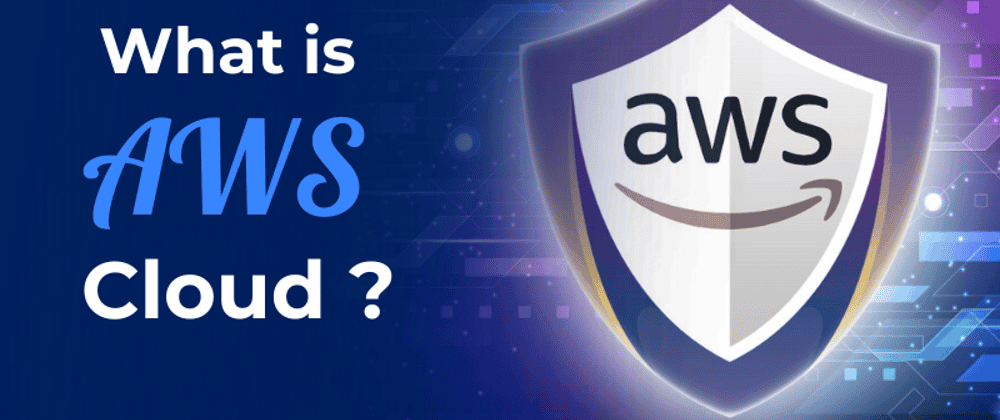Ethereum vs. Avalanche: A Deep Dive Comparison

Ethereum vs. Avalanche: A Deep Dive Comparison
The blockchain landscape is constantly evolving, with new platforms vying for dominance. Ethereum, the established leader, and Avalanche, a fast-rising challenger, both offer compelling solutions for smart contract development and decentralized applications (dApps). This article provides a comprehensive comparison to help you decide which platform best suits your needs.
Consensus Mechanism and Network Architecture
Ethereum's journey began with Proof-of-Work (PoW), transitioning to Proof-of-Stake (PoS) with Ethereum 2.0. This shift aimed to enhance scalability and energy efficiency. Validators stake ETH to participate in transaction validation, ensuring security and decentralization. In contrast, Avalanche employs its unique Avalanche consensus protocol, a highly efficient variation of PoS. Its multi-chain architecture—Exchange Chain (X-Chain), Platform Chain (P-Chain), and Contract Chain (C-Chain)—enables significantly faster transaction processing and finality within seconds. While Ethereum's extensive validator network contributes to high decentralization, Avalanche prioritizes speed and low energy consumption. The optimal choice depends on your application's specific requirements.
Scalability and Transaction Speed
Scalability is paramount for widespread blockchain adoption. Ethereum's base layer faces limitations, handling approximately 15-30 transactions per second (TPS). Layer-2 solutions like Optimistic Rollups and zk-Rollups mitigate this, but they introduce additional complexities. Avalanche, however, boasts a far superior throughput, exceeding 4,500 TPS without relying on Layer-2 scaling. This remarkable speed is due to its efficient consensus mechanism and subnet architecture, allowing for customized blockchain creation within the Avalanche ecosystem. For high-frequency trading scenarios, such as [AVAXUSDT](https://www.coinw.com/spot/avaxusdt) spot trading pairs, Avalanche's near-instant transaction finality provides a crucial advantage.
Gas Fees and Cost Efficiency
Transaction costs, or gas fees, significantly impact blockchain usability. Ethereum, historically known for high gas fees, has seen some improvement with EIP-1559, but costs remain a concern, especially during peak network activity. Avalanche presents a more cost-effective solution, with transaction fees typically under $1, making it considerably more accessible for various applications, including those involving frequent microtransactions.
Developer Ecosystem and Smart Contracts
Ethereum boasts the largest developer community, solidifying Solidity as the industry standard for smart contract development. Avalanche, however, is fully EVM-compatible, allowing for easy porting of Ethereum smart contracts. This interoperability, combined with Avalanche's lower fees and faster transactions, attracts developers seeking enhanced efficiency. Avalanche's innovative Subnets feature, providing customized blockchain networks, offers a significant advantage over Ethereum's current capabilities.
Security and Decentralization
Both platforms prioritize security and decentralization. Ethereum's vast validator network ensures robust security, while Avalanche, although having fewer validators, employs its unique consensus mechanism to maintain a high level of security while achieving fast transaction speeds. The choice between the two hinges on the specific balance you seek between decentralization and speed.
Investment Potential and Adoption Trends
Both Ethereum and Avalanche present promising investment prospects. Ethereum, with its considerable market capitalization, is considered a relatively safe long-term investment. Avalanche, while having a smaller market cap, is experiencing rapid growth and attracting increasing attention from developers and investors. The long-term success of each platform depends on continuous innovation and adaptation to market demands.
Conclusion
The choice between Ethereum and Avalanche involves weighing your priorities. Ethereum's established ecosystem and high decentralization are compelling, but it faces scalability and cost challenges. Avalanche offers an attractive alternative, prioritizing speed and cost efficiency. The ideal platform depends on the specific needs of your project.
Related Articles
Software Development
Unveiling the Haiku License: A Fair Code Revolution
Dive into the innovative Haiku License, a game-changer in open-source licensing that balances open access with fair compensation for developers. Learn about its features, challenges, and potential to reshape the software development landscape. Explore now!
Read MoreSoftware Development
Leetcode - 1. Two Sum
Master LeetCode's Two Sum problem! Learn two efficient JavaScript solutions: the optimal hash map approach and a practical two-pointer technique. Improve your coding skills today!
Read MoreBusiness, Software Development
The Future of Digital Credentials in 2025: Trends, Challenges, and Opportunities
Digital credentials are transforming industries in 2025! Learn about blockchain's role, industry adoption trends, privacy enhancements, and the challenges and opportunities shaping this exciting field. Discover how AI and emerging technologies are revolutionizing identity verification and workforce management. Explore the future of digital credentials today!
Read MoreSoftware Development
Unlocking the Secrets of AWS Pricing: A Comprehensive Guide
Master AWS pricing with this comprehensive guide! Learn about various pricing models, key cost factors, and practical tips for optimizing your cloud spending. Unlock significant savings and efficiently manage your AWS infrastructure.
Read MoreSoftware Development
Exploring the GNU Verbatim Copying License
Dive into the GNU Verbatim Copying License (GVCL): Understand its strengths, weaknesses, and impact on open-source collaboration. Explore its unique approach to code integrity and its relevance in today's software development landscape. Learn more!
Read MoreSoftware Development
Unveiling the FSF Unlimited License: A Fairer Future for Open Source?
Explore the FSF Unlimited License: a groundbreaking open-source license designed to balance free software distribution with fair developer compensation. Learn about its origins, strengths, limitations, and real-world impact. Discover how it addresses the challenges of open-source sustainability and innovation.
Read MoreSoftware Development
Conquer JavaScript in 2025: A Comprehensive Learning Roadmap
Master JavaScript in 2025! This comprehensive roadmap guides you through fundamental concepts, modern frameworks like React, and essential tools. Level up your skills and build amazing web applications – start learning today!
Read MoreBusiness, Software Development
Building a Successful Online Gambling Website: A Comprehensive Guide
Learn how to build a successful online gambling website. This comprehensive guide covers key considerations, technical steps, essential tools, and best practices for creating a secure and engaging platform. Start building your online gambling empire today!
Read MoreAI, Software Development
Generate Images with Google's Gemini API: A Node.js Application
Learn how to build an AI-powered image generator using Google's Gemini API and Node.js. This comprehensive guide covers setup, API integration, and best practices for creating a robust image generation service. Start building today!
Read MoreSoftware Development
Discover Ocak.co: Your Premier Online Forum
Explore Ocak.co, a vibrant online forum connecting people through shared interests. Engage in discussions, share ideas, and find answers. Join the conversation today!
Read MoreSoftware Development
Mastering URL Functions in Presto/Athena
Unlock the power of Presto/Athena's URL functions! Learn how to extract hostnames, parameters, paths, and more from URLs for efficient data analysis. Master these essential functions for web data processing today!
Read MoreSoftware Development
Introducing URL Opener: Open Multiple URLs Simultaneously
Tired of opening multiple URLs one by one? URL Opener lets you open dozens of links simultaneously with one click. Boost your productivity for SEO, web development, research, and more! Try it now!
Read More
Software Development, Business
Unlocking the Power of AWS: A Deep Dive into Amazon Web Services
Dive deep into Amazon Web Services (AWS)! This comprehensive guide explores key features, benefits, and use cases, empowering businesses of all sizes to leverage cloud computing effectively. Learn about scalability, cost-effectiveness, and global infrastructure. Start your AWS journey today!
Read MoreSoftware Development
Understanding DNS in Kubernetes with CoreDNS
Master CoreDNS in Kubernetes: This guide unravels the complexities of CoreDNS, Kubernetes's default DNS server, covering configuration, troubleshooting, and optimization for seamless cluster performance. Learn best practices and avoid common pitfalls!
Read MoreSoftware Development
EUPL 1.1: A Comprehensive Guide to Fair Open Source Licensing
Dive into the EUPL 1.1 open-source license: understand its strengths, challenges, and real-world applications for fair code. Learn how it balances freedom and developer protection. Explore now!
Read MoreSoftware Development
Erlang Public License 1.1: Open Source Protection Deep Dive
Dive deep into the Erlang Public License 1.1 (EPL 1.1), a crucial open-source license balancing collaboration and contributor protection. Learn about its strengths, challenges, and implications for developers and legal teams.
Read MoreSoftware Development
Unlocking Kerala's IT Job Market: Your Path to Data Science Success
Launch your data science career in Kerala's booming IT sector! Learn the in-demand skills to land high-paying jobs. Discover top data science courses & career paths. Enroll today!
Read More
Software Development
Automation in Software Testing: A Productivity Booster
Supercharge your software testing with automation! Learn how to boost productivity, efficiency, and accuracy using automation tools and best practices. Discover real-world examples and get started today!
Read MoreSoftware Development
Mastering Anagram Grouping in JavaScript
Master efficient anagram grouping in JavaScript! Learn two proven methods: sorting and character counting. Optimize your code for speed and explore key JavaScript concepts like charCodeAt(). Improve your algorithms today!
Read More
Software Development
Mastering Kubernetes Deployments: Rolling Updates and Scaling
Master Kubernetes Deployments for seamless updates & scaling. Learn rolling updates, autoscaling, and best practices for high availability and efficient resource use. Improve your application management today!
Read More